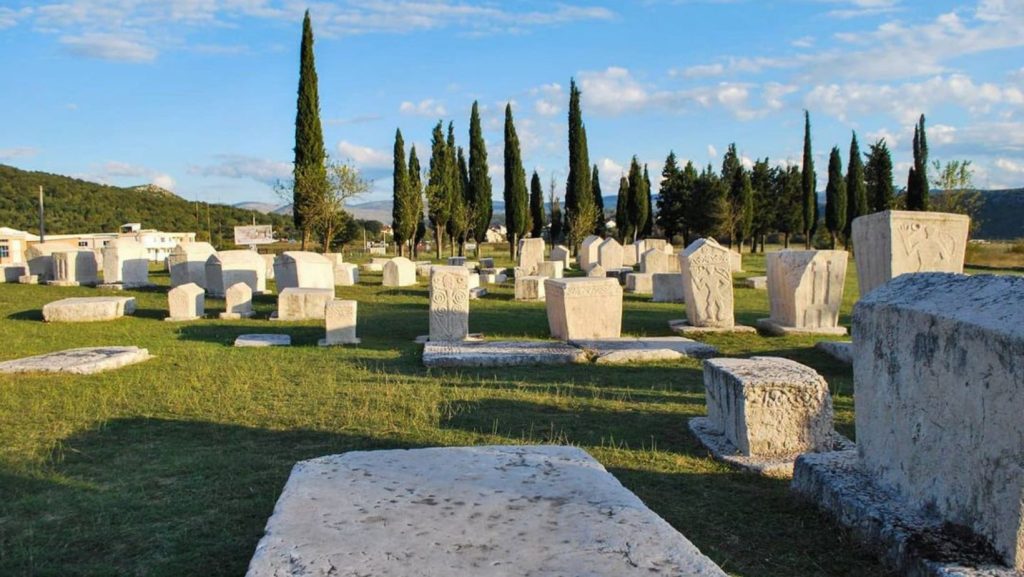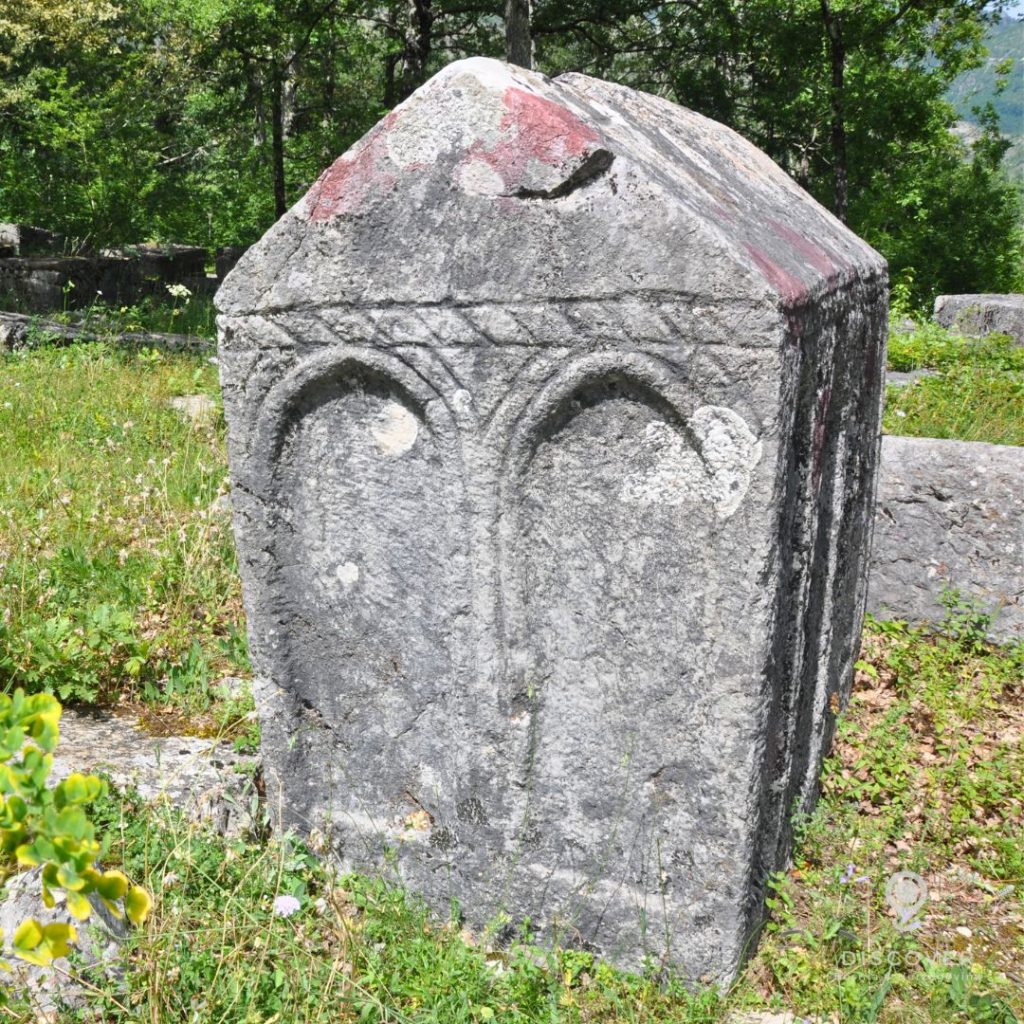
The “Grčka Glavica” necropolis is located in the village of Biskup near Glavatičevo, 30 kilometers southeast of Konjic. It is one of 30 medieval stećci necropolises designated as a UNESCO World Heritage Site in 2016 and also a national monument of Bosnia and Herzegovina. This area belonged to the medieval župa (county) of Kom and is a significant archaeological site with remains of a church and a necropolis of stećci (medieval tombstones).
About the Necropolis
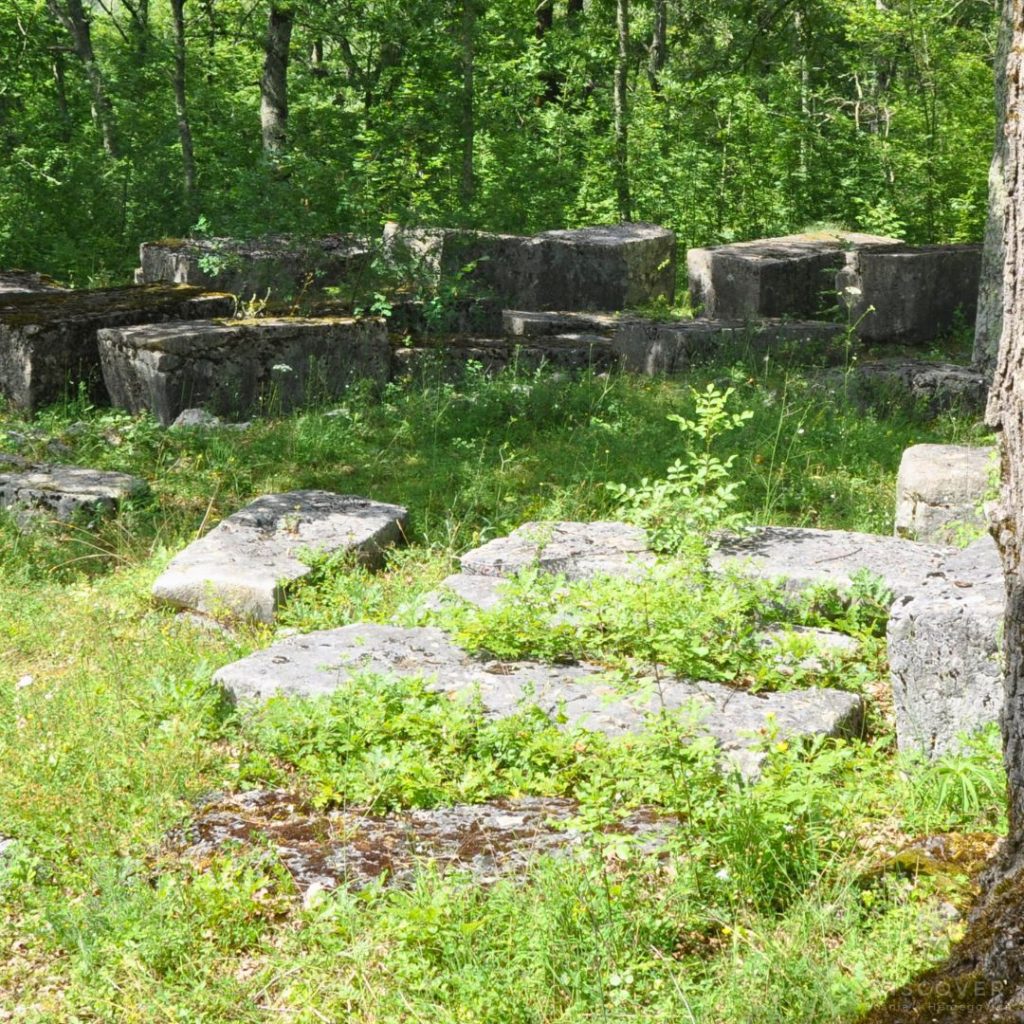
The necropolis comprises a total of 172 stećci, and a larger number of graves without stećci have also been recorded. Most of the stećci are in the form of chests and slabs, with only one gabled tombstone (sljemenjak).
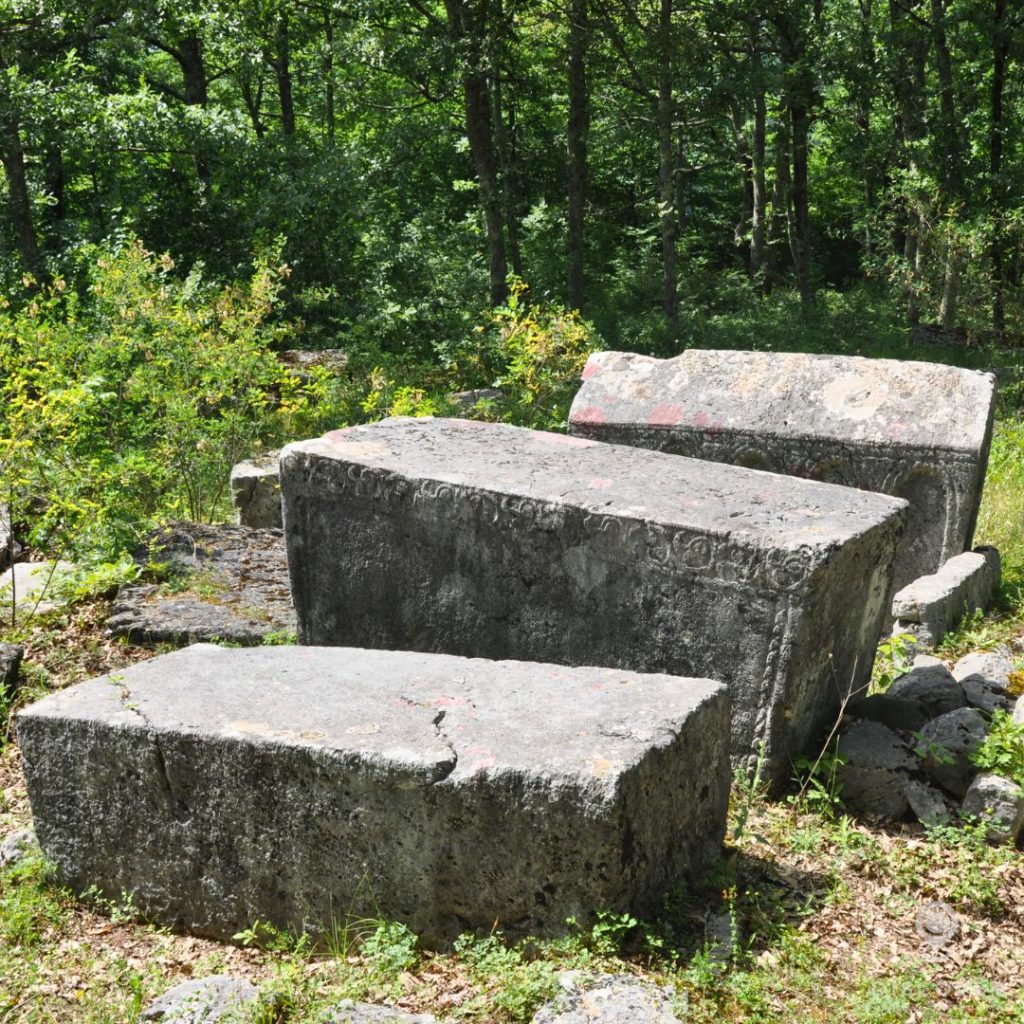
A few stećci are decorated with relief motifs, including a frieze of curved lines with trefoils, a frieze of oblique parallels, and arcades. The craftsmanship of the monuments is of high quality, with their orientation being northwest-southeast. Some stećci are placed inside the church, while most are located around it.
The Church and Stećci
The church is of Romanesque style with a semicircular apse from the 12th or 13th century. It was not built as a mausoleum for a single family but was used as a necropolis from the late 13th century.
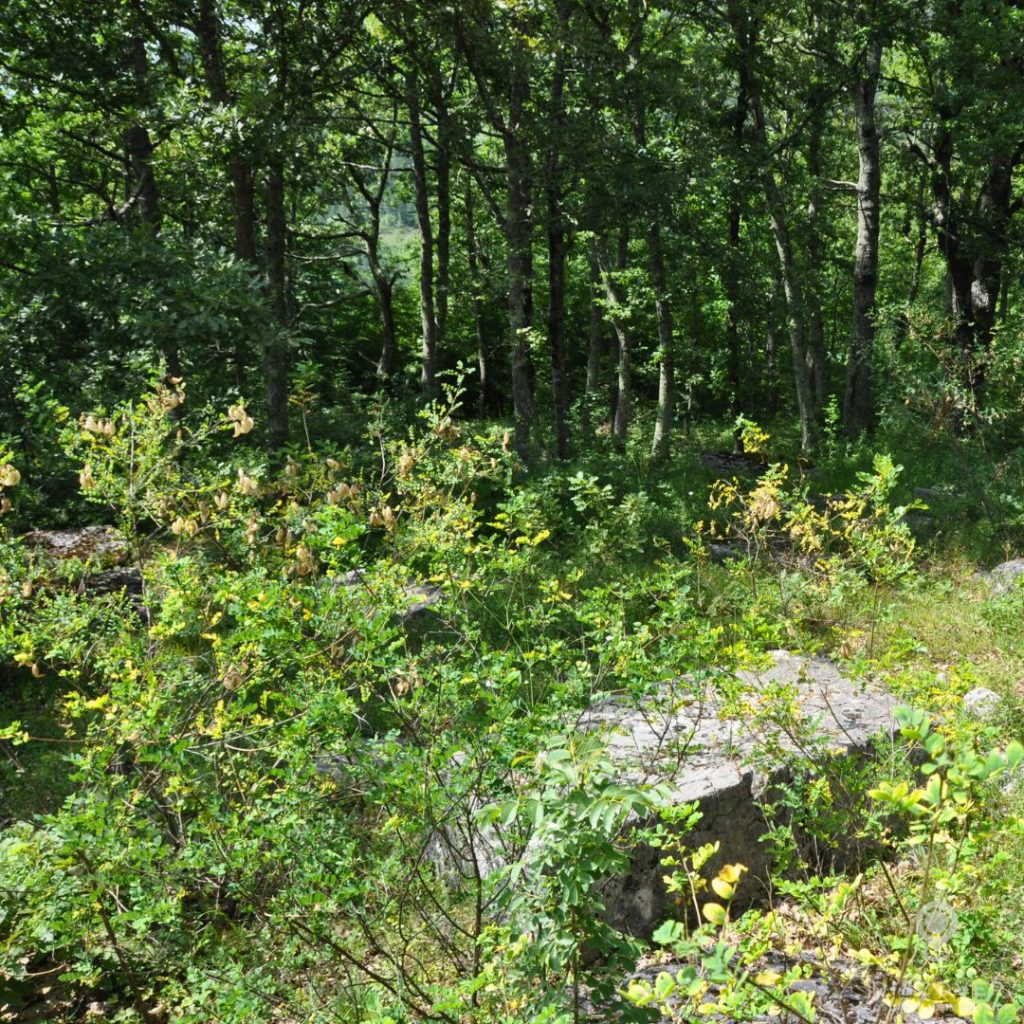
The stećci around the church are of a later date than those within its walls. The church foundations house the graves of the notable Bosnian noble family Sanković, raising questions about their religious affiliation.
Significant Finds
An epitaph on a high undecorated chest mentions Goisava, the wife of Duke Radič Sanković, buried at the end of 1398. Her grave contained various items, including a Dubrovnik dinar, coins from Venice, Verona, and Mantua, and silk ribbons. Other graves within the church revealed valuable items such as a gold brocade dress, a Venetian glass goblet, and silver buttons.
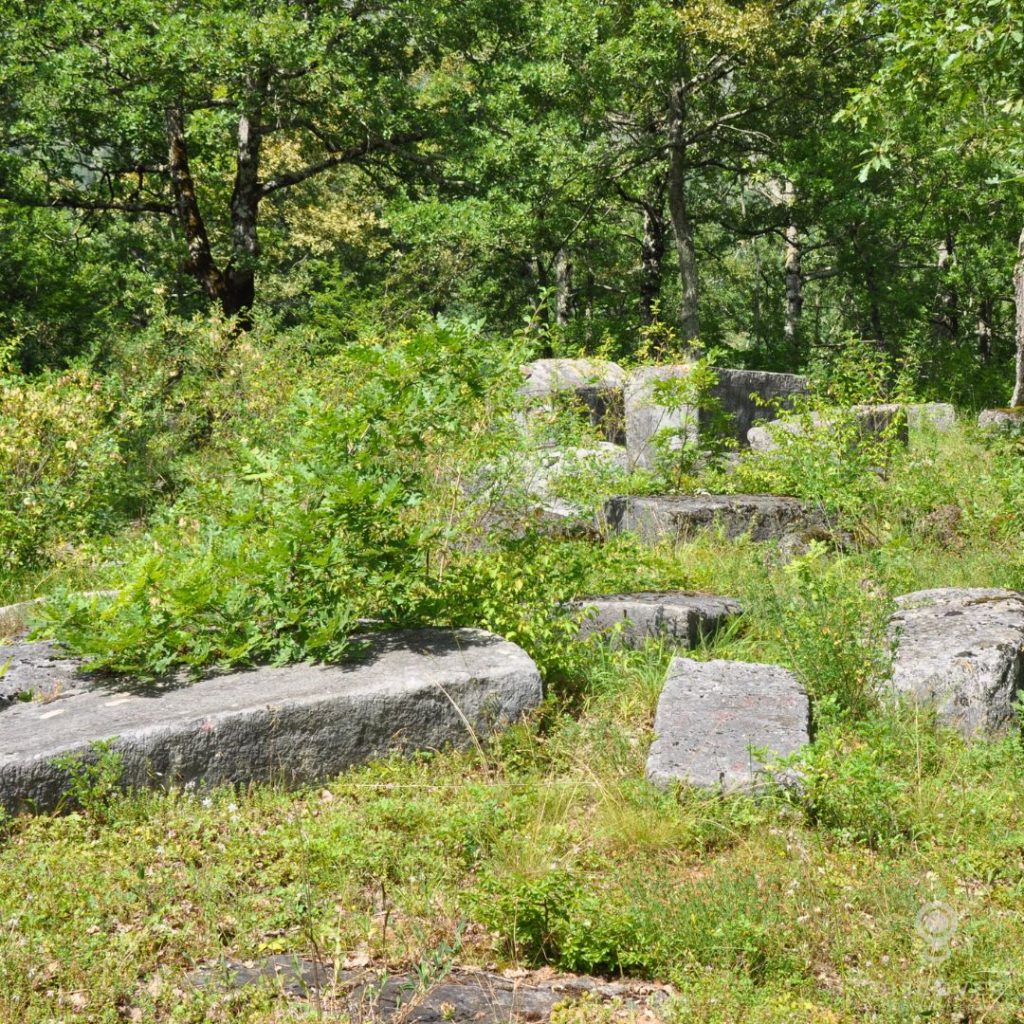
Under an eight-ton decorated stećak near the church apse, numerous valuable items were found, including a scroll-shaped coat of arms, dated to the 13th century. A stone sarcophagus, a rarity among stećci graves, was discovered in a grave in the church center. The skeleton, with a deep sword cut in the right shin, is believed by some historians to belong to Kaznac Sanko Miltenović, whose body was possibly relocated here after his death.

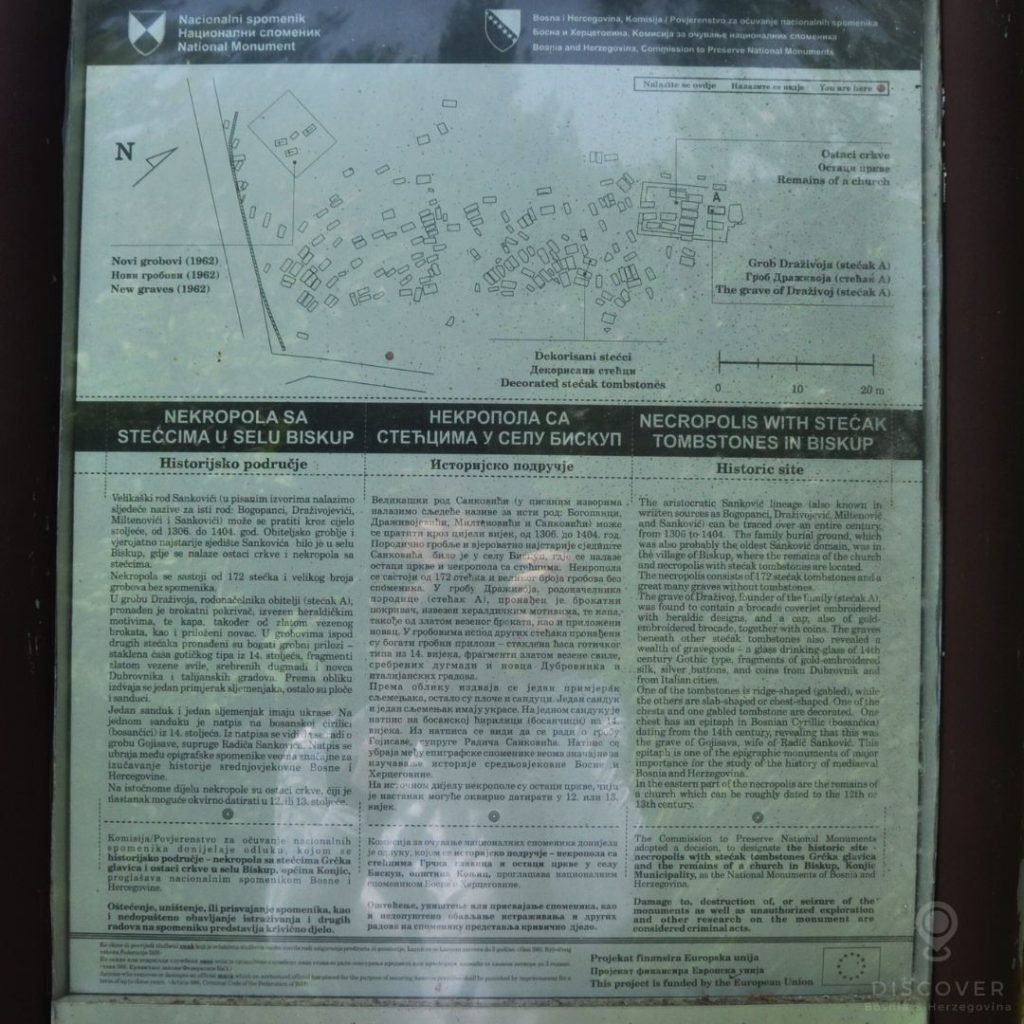
Don’t miss the opportunity to try fresh local trout at one of the two nearby restaurants, Biser Vrelo and Halilov ribnjak.



